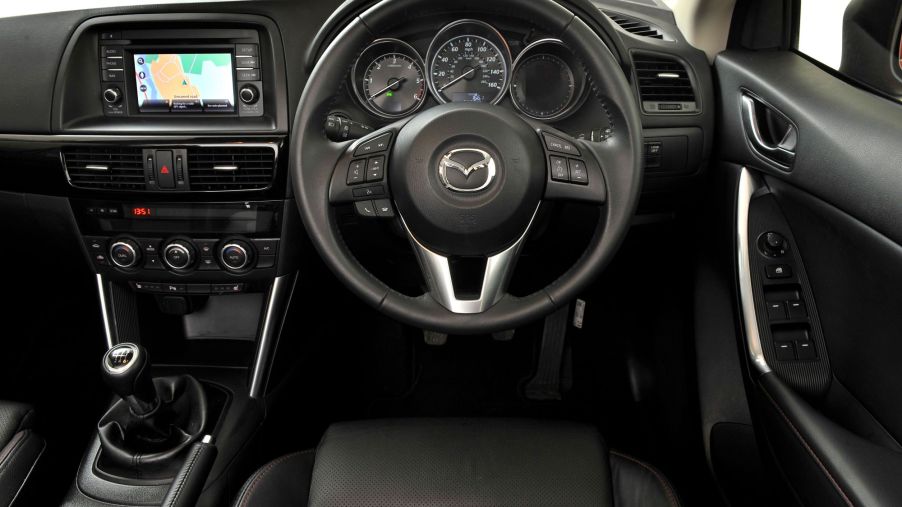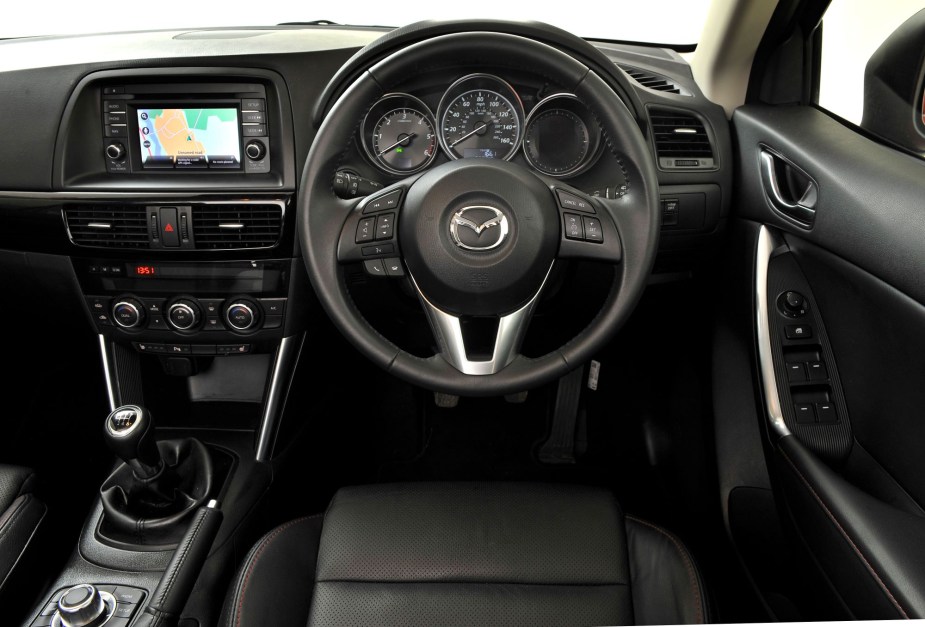
Buttons and Knobs Are Easier to Use and Safer Than Touchscreens
Infotainment systems in cars are getting more advanced by the day, and the name of the game these days seems to be bigger touchscreens. While a big screen can be nice to have in a house, it may not be a great idea to have one in a car, especially if those controls many of the car’s functions. Here’s why regular buttons and knobs are easier and safer to use than a big touchscreen.
The disadvantages of touchscreen controls

Like Tom’s Guide wrote, there are some excellent things about touchscreens despite having a lot of downsides, especially when they’re in a car. One of the good things about touchscreens is the lack of limitations to how many functions they can perform, compared to the limited buttons in a car. Unfortunately, this is a significant downside of touchscreens. If there are too many controls, people can be easily confused.
According to Tom’s Guide, it’s also tough for drivers to memorize which part of the touchscreen they need to touch to use a specific feature. As a result, it’s almost guaranteed that drivers will have to look at the touchscreen before they can use any controls. This can be distracting, and distractions like that can be dangerous when on the road.
A car’s touchscreen can be laggy, just like a regular one, making it annoying to use simple controls. Furthermore, many people try to avoid using their car’s touchscreen when their hands are greasy or oily. This is not an issue that a lot of people have with physical controls.
Physical controls have a lot of advantages
Like Tom’s Guide said, buttons are cheap, and people usually don’t mind using their car’s buttons when their fingers are greasy. Buttons are also easy to clean, which is another valuable benefit compared to a big touchscreen. Perhaps the most important advantage of physical controls is that they’re less distracting, and thus, they can be safer to use.
This is because buttons and knobs are tactile, especially compared to a touchscreen. And since the buttons are always at a specific location in the car, drivers can quickly memorize where their controls are with muscle memory. This can allow drivers to turn up the A/C without necessarily looking at the A/C controls. Many drivers would have to take their eyes off the road with a touchscreen to fiddle with it.
One of the more subjective benefits is how it feels to use those controls. Many drivers like how it feels to press a button or turn on a knob, while it’s more boring to just tap and swipe on a touchscreen.
Tesla has gotten a lot of flak for relying too much on touchscreens
Many automakers have been relying heavily on their car’s touchscreens for controls, and that’s especially true for Tesla. The company has put many of the car’s basic functions onto the Tesla’s screen, and some critics say that’s a recipe for disaster. For example, Tesla recently offered a gear shifting function that can be used on the car’s touchscreen, and this can be a bad idea, especially since it can fail.
Tesla also put the controls for the car’s windshield wipers onto the touchscreen, and this was such a bad idea that it was actually banned in Germany. That ruling had to do with putting basic car controls onto the touchscreen can be dangerous as it can be distracting.



